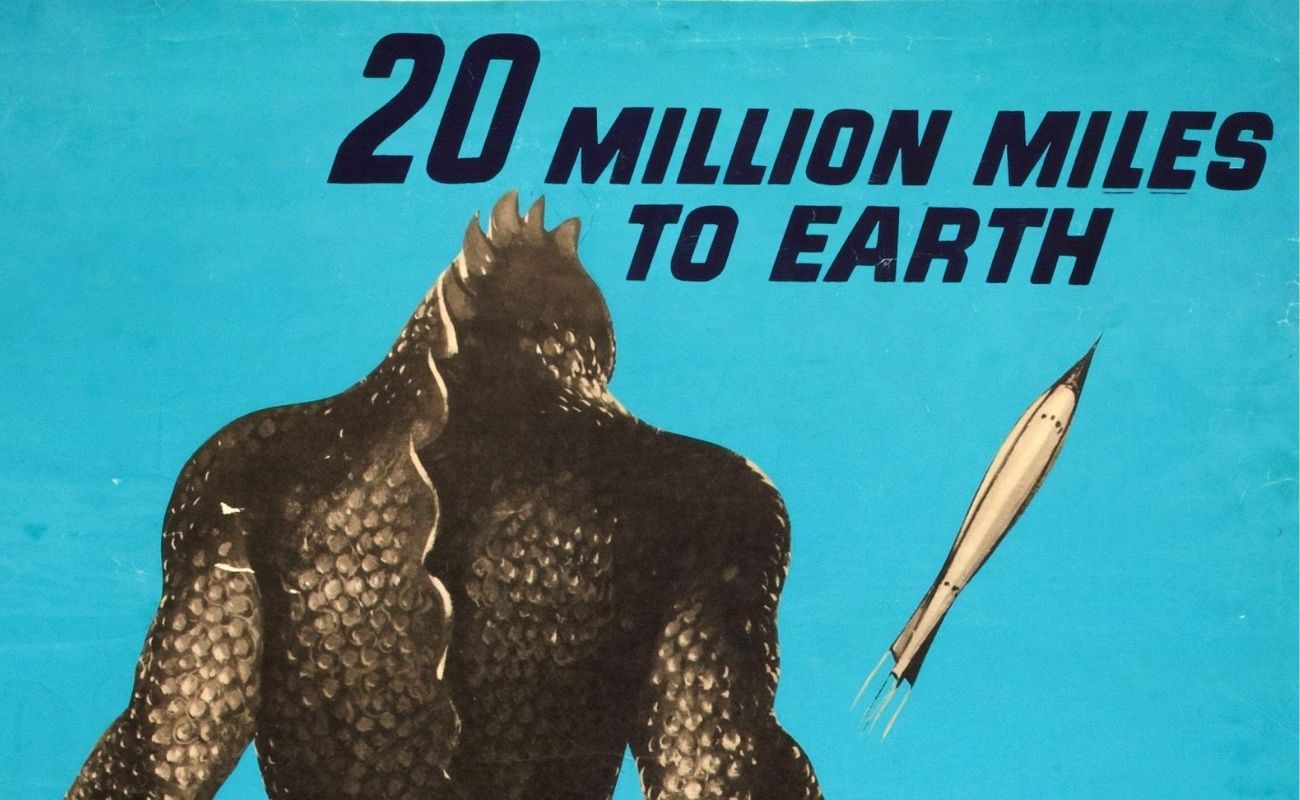
Are you a fan of classic science fiction movies? If so, then you’ve probably heard of the movie “20 Million Miles to Earth.” This iconic film, released in 1957, has become a cult favorite among sci-fi enthusiasts. Directed by Nathan Juran, the movie follows the thrilling journey of an alien creature that crash-lands on Earth after a spacecraft mission. With its groundbreaking animation and captivating storyline, “20 Million Miles to Earth” has left a lasting impact on the genre. In this article, we’ll dive into 40 fascinating facts about this groundbreaking film, exploring behind-the-scenes secrets, notable performances, and the legacy it has left behind. So, buckle up and get ready to embark on an epic adventure filled with extraterrestrial encounters and movie magic!
Key Takeaways:
- “20 Million Miles to Earth” is a classic sci-fi film from 1957, featuring groundbreaking visual effects and a thrilling storyline about an alien creature wreaking havoc on Earth. It’s a timeless adventure that continues to inspire filmmakers today.
- The movie’s success led to a sequel and a remastered version, showcasing its enduring legacy. With themes of teamwork, fear of the unknown, and ethical implications, it remains a captivating and influential piece of science fiction cinema.
The movie was released in 1957
20 Million Miles to Earth, directed by Nathan H. Juran, hit the big screens in the year It is a classic science fiction film that has captivated audiences for decades.
It was produced by the legendary Ray Harryhausen
This iconic film was produced by the legendary special effects artist Ray Harryhausen. Known for his skill in stop-motion animation, Harryhausen brought the creatures in the movie to life with his incredible talent.
The story revolves around an alien creature
20 Million Miles to Earth tells the story of a spacecraft that crash-lands on Earth carrying a Martian creature. As the creature grows and wreaks havoc, a team of scientists and military personnel must find a way to stop it.
The movie was shot in Italy
To cut production costs, the filmmakers decided to shoot the movie in Italy. The beautiful Italian landscapes served as the backdrop for the thrilling alien invasion.
The visual effects were groundbreaking for its time
Ray Harryhausen’s stop-motion animation techniques were groundbreaking for the time and set a new standard for visual effects in the industry. The creature’s movements were incredibly realistic and added a depth of realism to the film.
The creature design was inspired by the Venus flytrap
The design of the Martian creature was inspired by the carnivorous plant, the Venus flytrap. This unique design choice gave the creature a menacing and otherworldly appearance.
The movie showcases the tension between science and military
In 20 Million Miles to Earth, there is a constant tension between the scientific community and the military. This theme is prevalent throughout the film as they clash over the best course of action in dealing with the alien creature.
It became a cult classic
Over the years, 20 Million Miles to Earth has gained a cult following and has become a beloved film among sci-fi fans. Its unique storyline and impressive visual effects continue to resonate with audiences.
The movie is known for its thrilling climax
The final showdown between the creature and the military is a highlight of the film. The action-packed climax keeps viewers on the edge of their seats and provides a satisfying resolution to the story.
It received positive reviews from critics
Upon its release, 20 Million Miles to Earth received positive reviews from critics. They praised the special effects, the performances, and the overall entertainment value of the film.
There are references to the mythical Titan Prometheus
The movie subtly references the Greek myth of the Titan Prometheus, who brought fire to mankind. This clever inclusion adds depth to the story and ties it to a larger mythological framework.
The movie explores the fear of the unknown
One of the underlying themes in 20 Million Miles to Earth is the fear of the unknown. The alien creature represents the terrifying prospect of what lies beyond our world, tapping into primal fears.
The film was released in both black and white and color versions
The movie was initially released in black and white, but a colorized version was also made available. This allowed audiences to experience the vibrant hues of the Italian scenery and the creature in all its colorful glory.
The movie’s budget was relatively low
Compared to other science fiction films of its time, 20 Million Miles to Earth had a relatively low budget. However, the resourceful filmmaking and Harryhausen’s talent made it seem like a much more expensive production.
The movie was a box office success
Despite its modest budget, 20 Million Miles to Earth performed well at the box office. It resonated with audiences and became a commercial success, solidifying its place in the history of science fiction cinema.
The film’s score was composed by Mischa Bakaleinikoff
The musical score of the movie was composed by Mischa Bakaleinikoff. The intense and atmospheric score added to the suspense and excitement of the film.
The movie has inspired future filmmakers
Many filmmakers have cited 20 Million Miles to Earth as an inspiration for their own work. Its innovative visual effects techniques and compelling storytelling continue to influence sci-fi cinema to this day.
The creature has a unique ability to regenerate
The Martian creature in the movie has the ability to regenerate its limbs. This adds to its menacing nature and makes it a formidable foe for the human characters.
The movie tackles themes of imperialism
A deeper analysis of 20 Million Miles to Earth reveals themes of imperialism. The arrival of the alien creature can be seen as a metaphor for the invasive nature of imperialism and its impact on indigenous cultures.
The movie showcases the power of teamwork
Throughout the film, the characters must work together to combat the alien threat. This emphasizes the power of teamwork and the importance of cooperation in overcoming challenges.
The film’s title was originally “The Beast from Space”
Before its release, the movie was originally titled “The Beast from Space.” However, it was later changed to “20 Million Miles to Earth” to create a stronger connection to the science fiction genre.
The movie features an iconic battle in Rome
One of the most memorable scenes in the film takes place in Rome, where the creature battles against the military in a spectacular showdown. The destruction caused by the creature adds to the tension and excitement of the scene.
The movie’s success led to a sequel
The success of 20 Million Miles to Earth led to a sequel titled “The Valley of Gwangi,” which was also produced by Ray Harryhausen. The sequel took audiences on another thrilling adventure with prehistoric creatures.
The movie showcases the fear of invasion
During the Cold War era, the fear of invasion was prevalent. 20 Million Miles to Earth taps into this fear and explores the potential consequences of an extraterrestrial invasion.
The movie’s creature is named Ymir
The alien creature in the movie is given the name Ymir. This name, derived from Norse mythology, adds a touch of mystique to the character and further emphasizes its otherworldly origins.
The movie’s poster became iconic
The movie’s poster, featuring a towering Ymir facing off against a helicopter, became an iconic image and has been referenced and parodied in various forms of media.
The movie explores the ethical implications of experimentation
The scientists in the movie engage in experiments on the alien creature, raising ethical questions about the boundaries of scientific exploration. This adds layers of complexity to the story.
The movie has a runtime of approximately 82 minutes
20 Million Miles to Earth has a runtime of approximately 82 minutes. Within this relatively short duration, it manages to pack in thrilling action and captivating storytelling.
The movie was released during the Golden Age of Science Fiction
The movie’s release in 1957 aligns with the Golden Age of Science Fiction, a time when the genre was flourishing in both literature and film. 20 Million Miles to Earth is a testament to the creativity and innovation of the era.
The movie was remastered and re-released in 2007
To celebrate the 50th anniversary of the film, a remastered and re-released version was made available in This allowed a new generation of viewers to experience the classic sci-fi adventure.
The movie’s success led to further collaborations between the director and Ray Harryhausen
Nathan H. Juran and Ray Harryhausen went on to collaborate on several more films after the success of 20 Million Miles to Earth. Their partnership was a winning formula that resonated with audiences.
The movie features a memorable confrontation at the Colosseum
One of the film’s most memorable moments is the confrontation between the creature and the military at the iconic Colosseum in Rome. The ancient landmark adds a sense of grandeur to the battle.
The movie explores the consequences of human curiosity
20 Million Miles to Earth delves into the consequences of human curiosity and our desire to explore the unknown. The arrival of the creature serves as a cautionary tale about the dangers of tampering with forces beyond our control.
The movie’s influence can be seen in later alien invasion films
The impact of 20 Million Miles to Earth can be seen in later alien invasion films, which often draw inspiration from its storyline and visual effects. It paved the way for a whole subgenre of science fiction cinema.
The movie’s original screenplay was titled “The Giant Ymir”
The original screenplay for the movie was titled “The Giant Ymir” before it was changed to “20 Million Miles to Earth.” This change further emphasizes the distance the creature has traveled from its Martian origins.
The movie combines elements of horror and science fiction
20 Million Miles to Earth blends elements of horror and science fiction, creating a unique and captivating viewing experience. The film’s ability to evoke both fear and awe is a testament to its storytelling prowess.
The movie’s screenplay was written by Bob Williams and Christopher Knopf
The screenplay for 20 Million Miles to Earth was crafted by Bob Williams and Christopher Knopf. Their talent in weaving a compelling narrative contributed to the movie’s success.
The movie reflects the anxieties of the Atomic Age
Released during the height of the Cold War and the Atomic Age, 20 Million Miles to Earth reflects the anxiety and fears of the era. The notion of an alien creature from another planet resonated with the prevailing cultural climate.
The movie uses practical effects with miniature sets
The filmmakers utilized practical effects and miniature sets to bring the alien invasion to life. This hands-on approach adds authenticity to the visuals and enhances the overall viewing experience.
The movie’s legacy lives on
Even after more than six decades, 20 Million Miles to Earth continues to captivate audiences with its thrilling storyline, impressive special effects, and thought-provoking themes. Its impact on the science fiction genre remains strong and its legacy will endure for years to come.
Conclusion
20 Million Miles to Earth is a classic sci-fi movie that has captivated audiences for decades with its thrilling storyline and groundbreaking visual effects. With 40 facts about the movie, we’ve explored the incredible production behind this cinematic masterpiece. From the iconic creature design by Ray Harryhausen to the use of stop-motion animation, 20 Million Miles to Earth has left an indelible mark on the sci-fi genre.
With its engaging plot, memorable characters, and stunning visuals, 20 Million Miles to Earth continues to influence and inspire filmmakers today. Whether you’re a fan of classic sci-fi or simply appreciate the art of filmmaking, this movie is sure to entertain and leave you in awe.
FAQs
1. Who directed 20 Million Miles to Earth?
20 Million Miles to Earth was directed by Nathan Juran.
2. When was the movie released?
The movie was released on June 15, 1957.
3. What is the premise of 20 Million Miles to Earth?
The movie follows the story of a spaceship that crashes near Rome, Italy, bringing with it a small extraterrestrial creature. As the creature grows and wreaks havoc on the city, a team of scientists must find a way to stop it.
4. What is the significance of the creature design in the movie?
The creature design in 20 Million Miles to Earth, created by Ray Harryhausen, revolutionized stop-motion animation in the 1950s. The intricately designed creature brought a new level of realism to the screen and became an iconic symbol of the movie.
5. How were the visual effects created?
The visual effects in 20 Million Miles to Earth were achieved through the innovative use of stop-motion animation. This technique involved posing and taking photographs of miniature models, creating the illusion of movement when played back at normal speed.
6. Has 20 Million Miles to Earth been remade?
No, 20 Million Miles to Earth has not been remade, but its impact on the sci-fi genre and the world of visual effects can still be felt today.
7. Is 20 Million Miles to Earth a must-watch for sci-fi fans?
Absolutely! 20 Million Miles to Earth is considered a must-watch for sci-fi enthusiasts due to its groundbreaking special effects, engaging storyline, and timeless appeal. It is a classic that has stood the test of time.
Was this page helpful?
Our commitment to delivering trustworthy and engaging content is at the heart of what we do. Each fact on our site is contributed by real users like you, bringing a wealth of diverse insights and information. To ensure the highest standards of accuracy and reliability, our dedicated editors meticulously review each submission. This process guarantees that the facts we share are not only fascinating but also credible. Trust in our commitment to quality and authenticity as you explore and learn with us.


